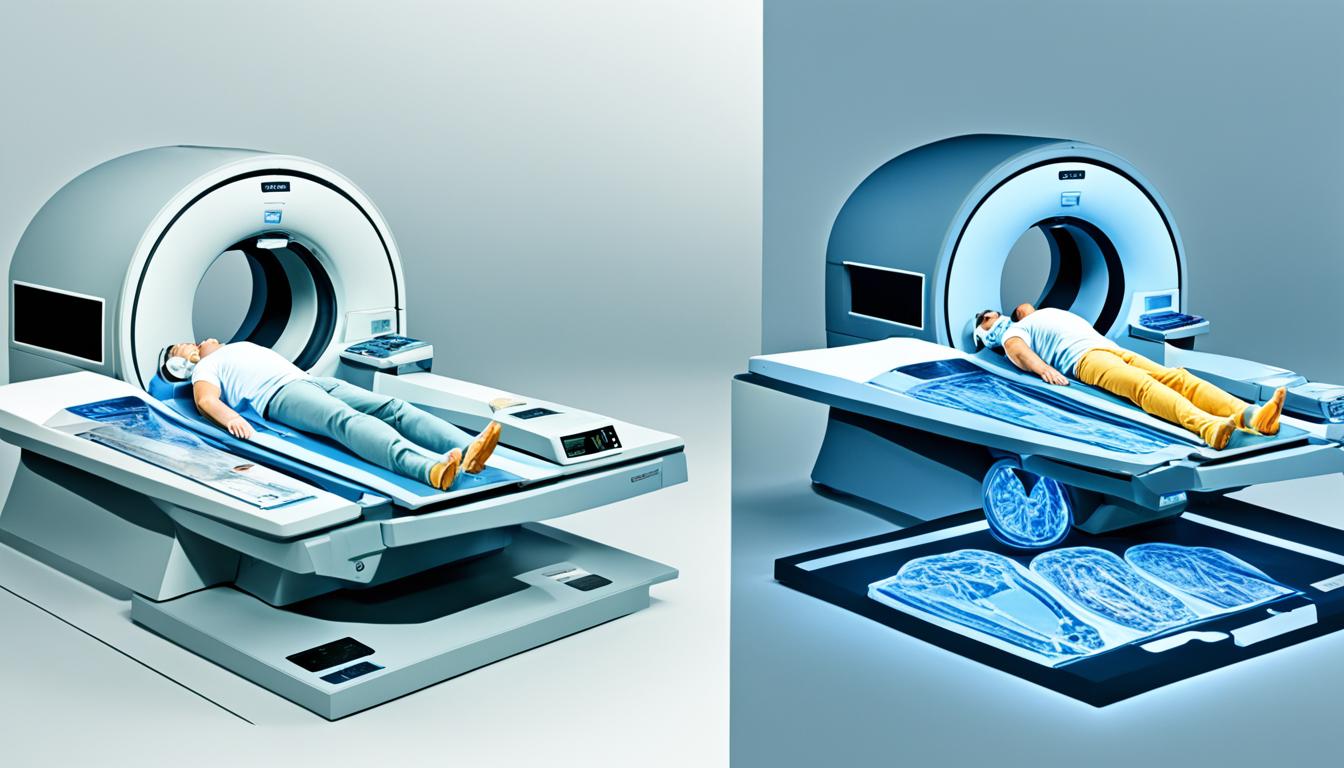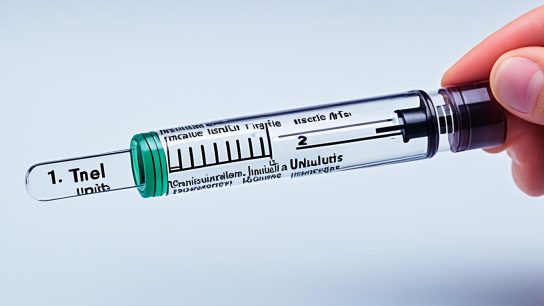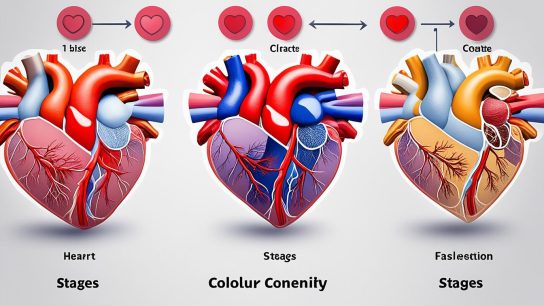A CT scan and a CAT scan are two terms that are often used interchangeably, leading to confusion among patients. You might be wondering, “Is a CT scan the same as a CAT scan?” Well, the short answer is no – and yes.
Let me explain. Both a CT scan and a CAT scan refer to the same diagnostic exam that uses x-ray images to produce detailed cross-sectional images of the body. The purpose of these scans is to aid in the diagnosis and evaluation of various conditions and diseases. So, in terms of their overall function and purpose, there is no difference between them. They are essentially two names for the same medical procedure.
However, there is a slight difference in terminology. In the past, the term CAT scan was more commonly used to describe this procedure. CAT stood for “Computerized Axial Tomography,” which referred to the use of computer-processed combinations of x-ray images. But as technology advanced, the term CT scan, which stands for “Computed Tomography,” became more widely adopted.
So, to sum it up, a CT scan and a CAT scan are essentially the same thing – just with different names. You might hear medical professionals use either term, as some still prefer the older terminology. But rest assured, whether you’re scheduled for a CT scan or a CAT scan, you can expect the same diagnostic benefits and accurate imaging results.
CT Scan vs CAT Scan: Radiation and Cost Comparison
When it comes to radiation, both CT scans and CAT scans use x-rays to create images. The amount of radiation exposure during a CT scan or CAT scan can vary depending on the specific procedure and protocols used.
In terms of cost, both CT scans and CAT scans can be expensive. The cost can vary depending on factors such as the facility, location, and insurance coverage. To get a better understanding of the costs associated with these scans, it is important to consult with your healthcare provider and insurance company.
Let’s compare the radiation levels and costs of CT scans and CAT scans in a table:
| Factors | CT Scan | CAT Scan |
|---|---|---|
| Radiation Exposure | Uses x-rays to create images | Uses x-rays to create images |
| Cost | Varies depending on facility, location, and insurance | Varies depending on facility, location, and insurance |
As seen in the table, both CT scans and CAT scans use x-rays to create images, resulting in similar radiation exposure. Additionally, the cost of both scans can vary based on factors such as the facility, location, and insurance coverage.
It is important to note that the exact radiation exposure and cost may differ on a case-by-case basis. Your healthcare provider and insurance company can provide more specific information based on your individual circumstances.
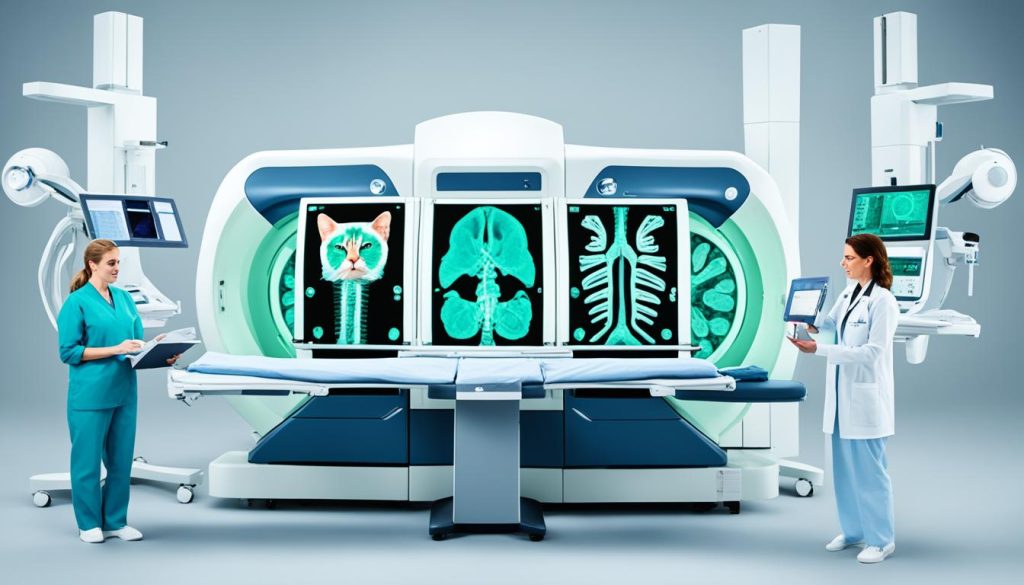
Usage and Applications of CT Scans and CAT Scans
CT scans and CAT scans are widely used in the field of medical imaging for the diagnosis and detection of various diseases and conditions. These imaging techniques provide detailed images of the body’s tissues, organs, blood vessels, and bones, allowing healthcare professionals to assess and evaluate a wide range of medical issues.
Both CT scans and CAT scans are commonly utilized to detect and evaluate conditions such as fractures, tumors, infections, and internal injuries. The high-resolution images produced by these scans help identify abnormalities, provide valuable insights for treatment planning, and monitor the progress of medical interventions.
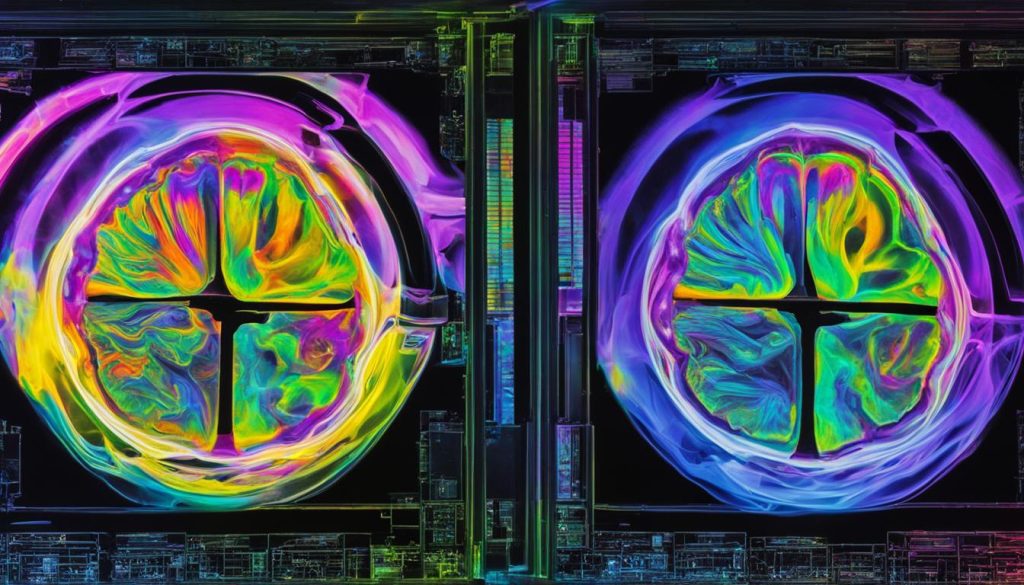
Common Applications of CT Scans and CAT Scans:
- Diagnosing and monitoring cancer: CT scans and CAT scans are effective in identifying tumors, determining their size and extent, and monitoring the response to cancer treatments.
- Evaluating injuries: These scans are used to assess the severity of trauma, such as fractures, internal bleeding, and organ damage.
- Detecting infections: CT scans and CAT scans can reveal abscesses, inflammations, and other infections in different parts of the body.
- Guiding surgeries and biopsies: Precise imaging provided by CT scans and CAT scans helps guide surgical procedures and needle biopsies, ensuring accurate targeting and minimizing invasiveness.
- Evaluating vascular conditions: These scans are instrumental in evaluating blood vessels and detecting conditions like aneurysms, blockages, or malformations.
- Assessing lung diseases: CT scans and CAT scans are commonly used to evaluate lung conditions such as pulmonary embolism, lung cancer, and chronic obstructive pulmonary disease (COPD).
Comparison of CT Scans and CAT Scans in Usage:
| CT Scans | CAT Scans |
|---|---|
| More commonly used term in current medical practice | Legacy term still used by some medical professionals |
| Utilizes computer-processed x-ray images to create cross-sectional images | Utilizes computer-processed x-ray images to create cross-sectional images |
| Widely available and accessible | Widely available and accessible |
| Used in various medical specialties | Used in various medical specialties |
| Increasingly integrated with advanced technology and imaging techniques | Increasingly integrated with advanced technology and imaging techniques |
CT scans and CAT scans play crucial roles in modern healthcare by providing valuable diagnostic information and guiding medical interventions. These imaging techniques have revolutionized medical imaging and significantly contributed to the diagnosis and management of various diseases and conditions.
How a CT Scan Works and What to Expect During the Procedure?
Understanding the CT scan procedure and what to expect can help alleviate any anxiety before undergoing this diagnostic exam. A CT scan, or computed tomography scan, is a medical imaging technique that uses x-ray images to create cross-sectional images of the body. Let’s walk through the steps of a CT scan procedure and what you may experience.
Preparation for a CT Scan
The preparation for a CT scan may vary depending on the type of scan being performed. In some cases, you may be instructed to avoid eating or drinking for a few hours before the procedure. It is important to follow all instructions given by your healthcare provider to ensure accurate results.
The CT Scan Process
During the CT scan, you will be asked to lie on a table that will move into a large donut-shaped machine called a CT scanner. This machine will rotate around your body, taking multiple x-ray images from different angles. These images will be processed by a computer to create detailed cross-sectional images of the area being scanned. Throughout the procedure, it is important to remain still and follow any instructions given by the technologist.
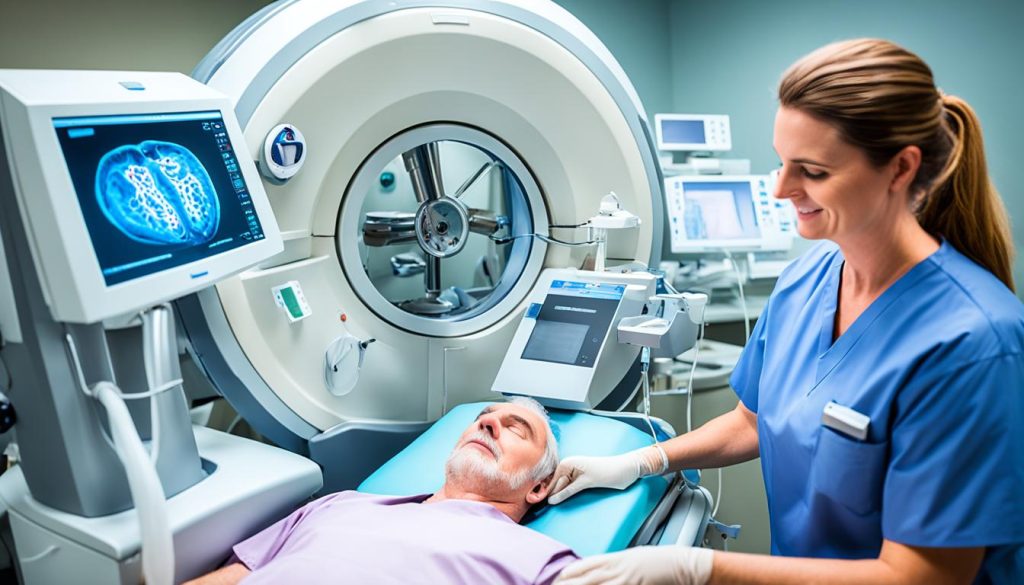
What to Expect?
The actual CT scan is painless, but the machine can be noisy. You may be provided with earplugs or headphones to minimize the noise. Depending on the area being scanned, you may be asked to hold your breath for a few seconds or maintain certain positions during the scan. The technologist will guide you through these steps to ensure the best quality images are obtained.
Possible Side Effects
After the CT scan, you may experience some side effects, although they are generally mild and temporary. If contrast dye is used during the scan, you may notice a metallic taste in your mouth. Other side effects may include fatigue, headache, weakness, or constipation. These side effects usually subside on their own within a short period of time.
Once the scan is complete, a radiologist will review the images and interpret the results. The findings will then be communicated to you by your healthcare provider, who will discuss any further steps or treatments, if necessary.
Overall, a CT scan is a safe and valuable diagnostic tool. Understanding the procedure and what to expect can help alleviate any concerns you may have. If you have any questions or concerns, be sure to discuss them with your healthcare provider before the scan.
Risks and Limitations of CT Scans and CAT Scans
While CT scans and CAT scans are generally considered safe, it’s important to be aware of the risks and limitations associated with these imaging procedures. One of the main concerns is the exposure to radiation during the scan. Although the amount of radiation used is minimal, there is still a slight increased risk of developing cancer over time.
However, it’s essential to understand that the benefits of obtaining an accurate diagnosis often outweigh the potential long-term risks. CT scans and CAT scans provide valuable information that can guide medical treatment and improve patient outcomes.
For pregnant individuals, extra caution is necessary. Radiation exposure during a CT scan should be carefully considered and discussed with a healthcare provider. It is crucial to inform the healthcare provider about the pregnancy before undergoing any imaging procedures. In most cases, the doses of radiation used in a CT scan are low enough to not cause harm to a developing fetus, but it’s essential to take precautions to minimize any potential risks.
Key Points
- CT scans and CAT scans involve exposure to radiation.
- The risks associated with radiation exposure include a slightly increased risk of developing cancer over time.
- The benefits of accurate diagnosis with these scans often outweigh the potential risks.
- Pregnant individuals should inform their healthcare provider about their pregnancy before undergoing CT scans as radiation can potentially harm the developing fetus.
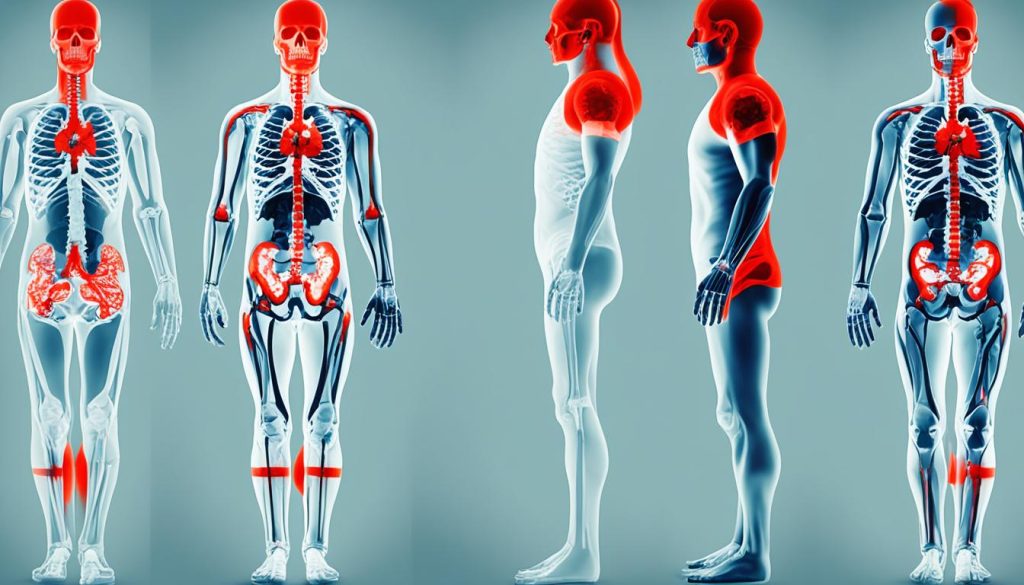
Conclusion
In conclusion, a CT scan and a CAT scan are two terms that are often used interchangeably to describe the same diagnostic exam. Both procedures use x-ray images to produce cross-sectional images of the body, providing valuable insights for the diagnosis and evaluation of various diseases and conditions.
While the terminology may differ, it is important to note that there is no significant difference between a CT scan and a CAT scan. Medical professionals may use these terms based on personal preference or historical usage, but the underlying technology and purpose remain the same.
However, it is crucial to be aware of the potential risks associated with these imaging techniques, particularly the exposure to radiation. While the benefits of accurate diagnosis are invaluable, it is important to discuss the benefits and risks with your healthcare provider to determine the appropriateness of a CT scan or CAT scan for your specific situation.
Remember, the use of these scans should always be guided by medical professionals who can evaluate the individual’s needs and take necessary precautions to ensure safety and accuracy.

